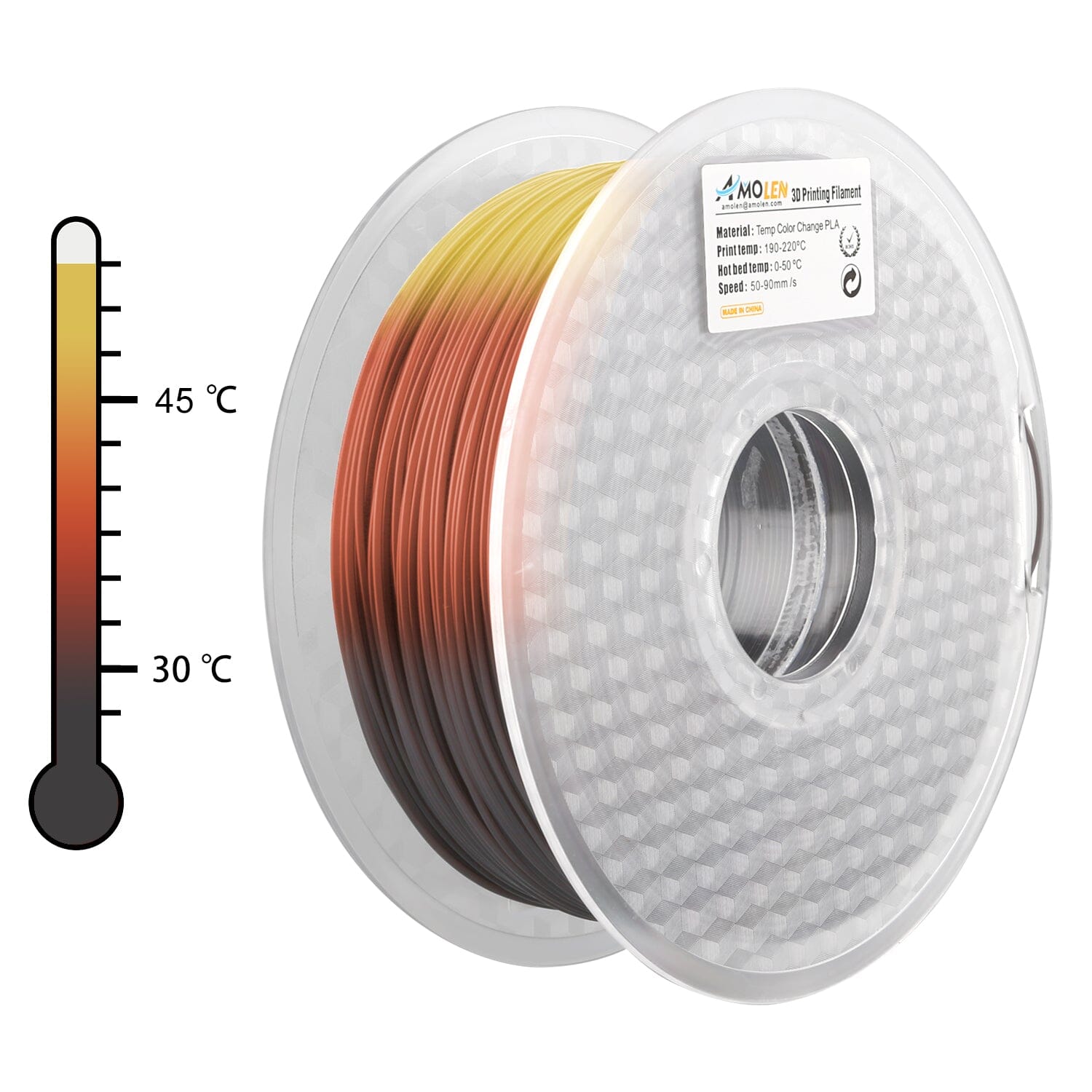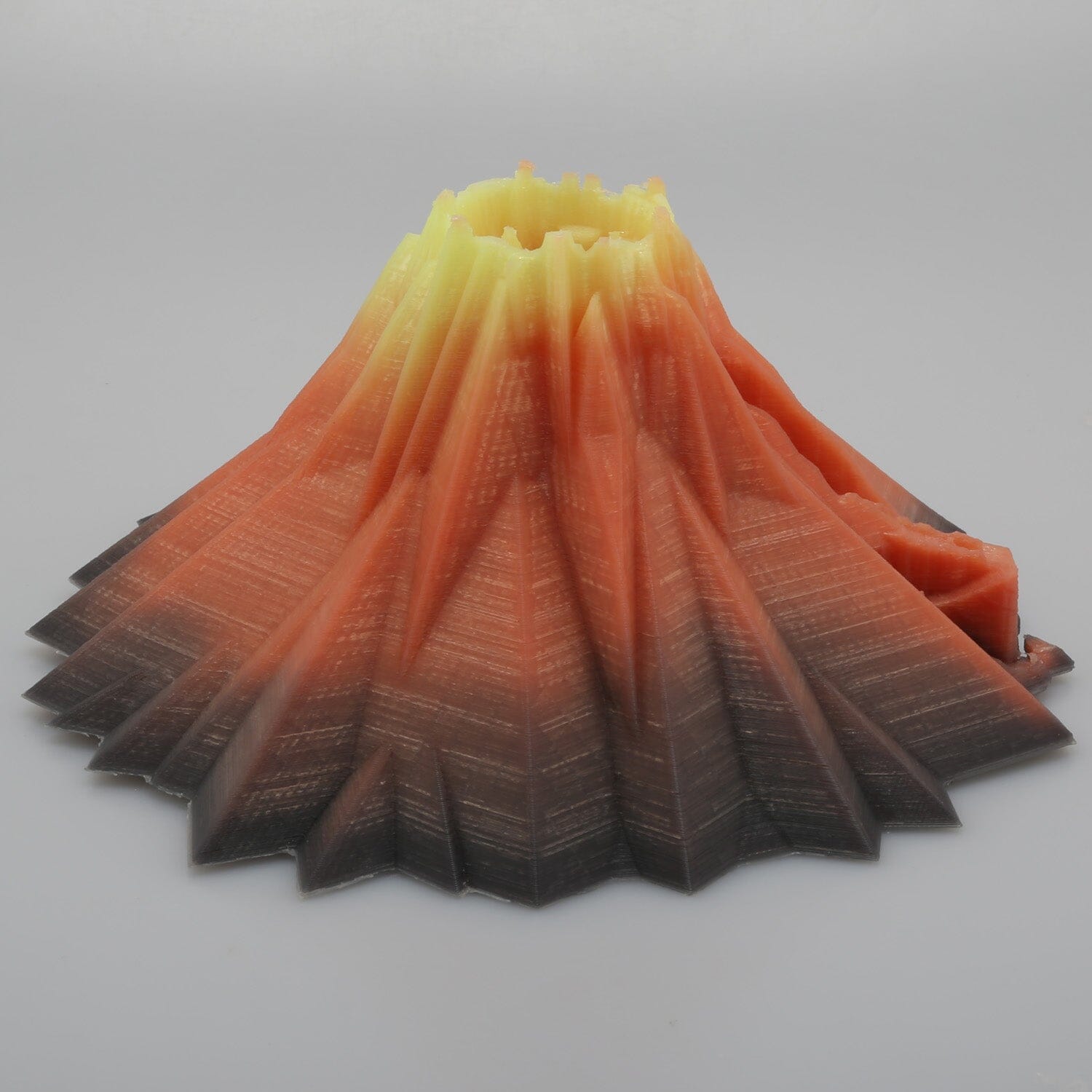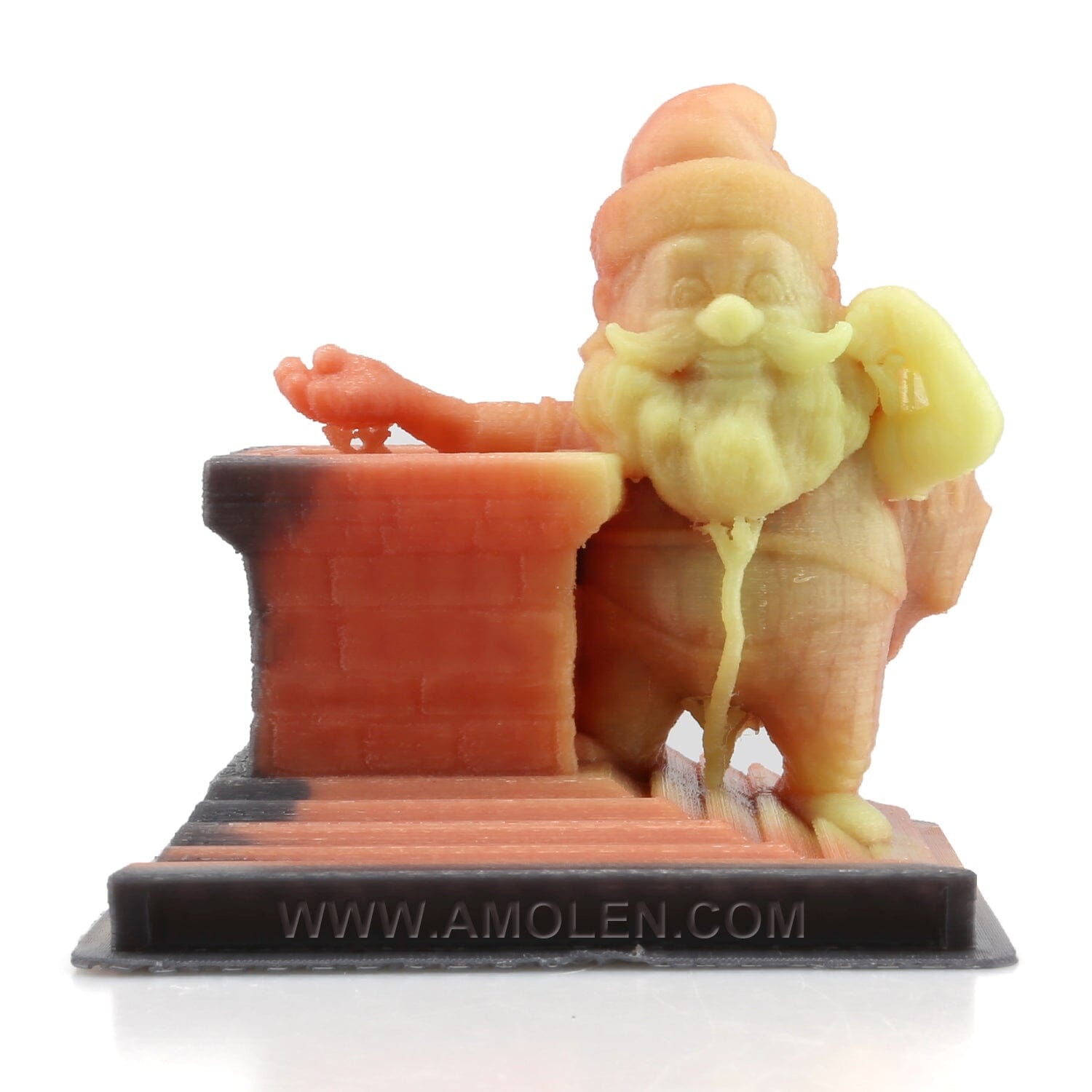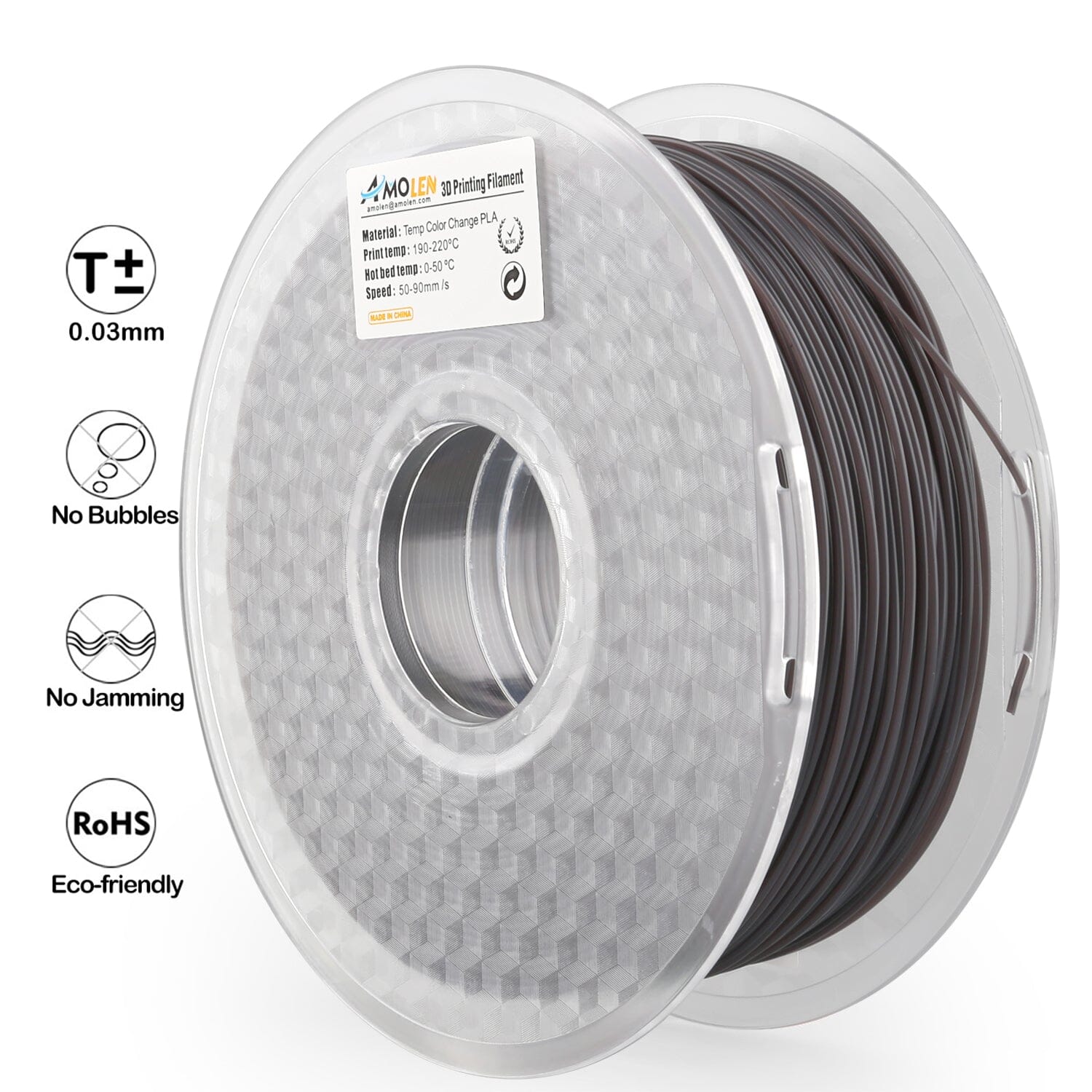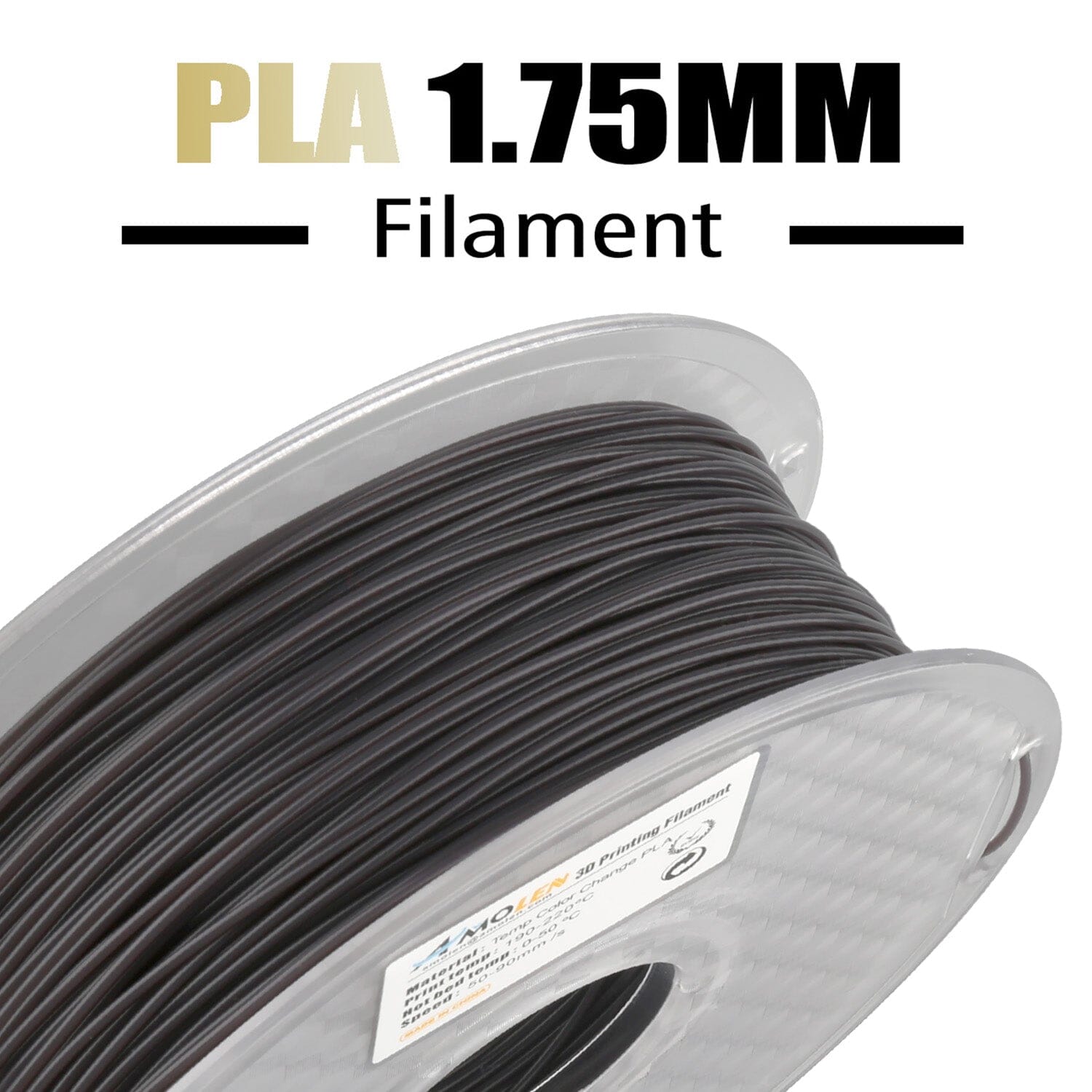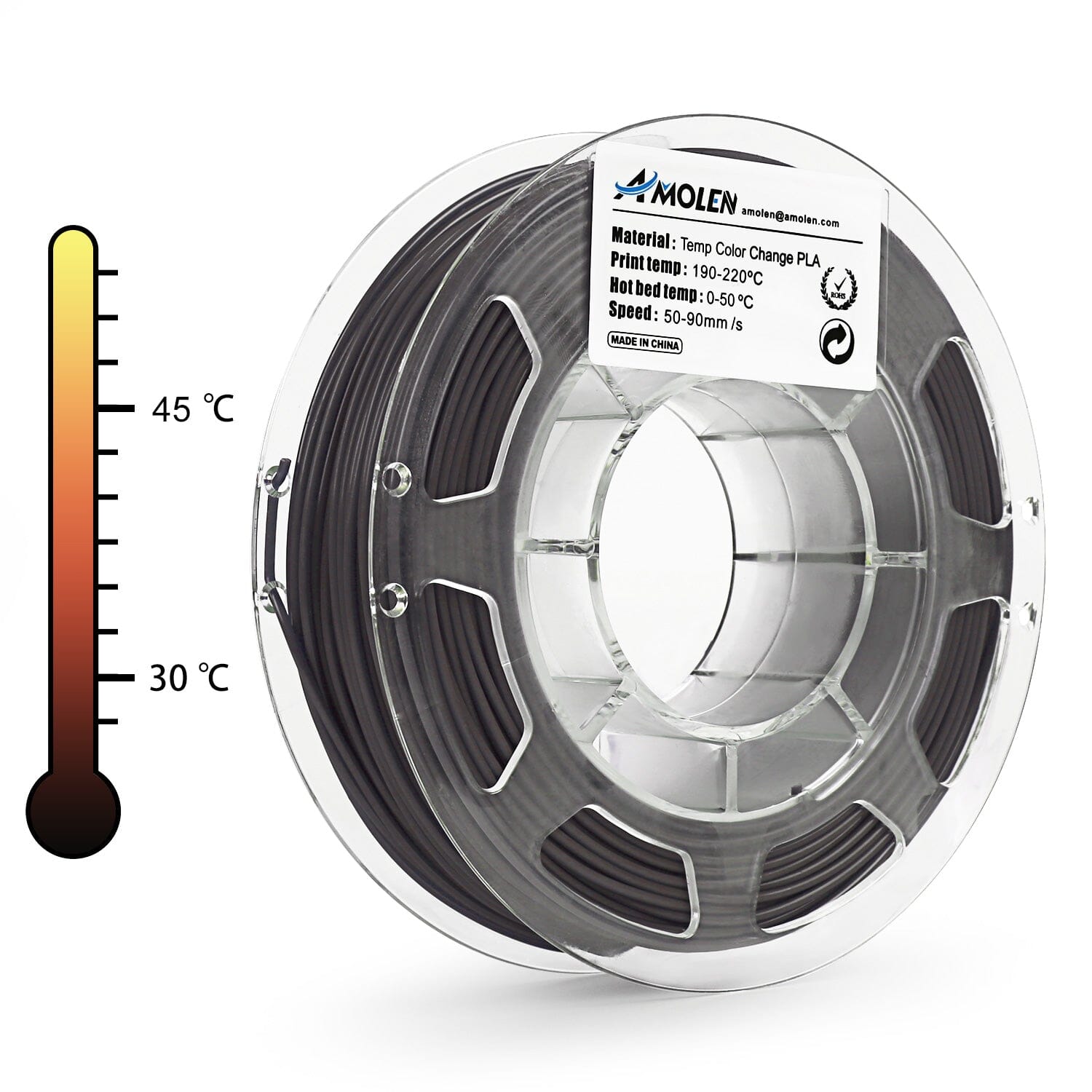Temp Color Change PLA- VARIETY PACK, 200g*4, 1.75MM
- Regular price
-
$34.99 - Regular price
-
$35.99 - Sale price
-
$34.99
- Color changes with variations in temperature
- No bubble, No jamming, No warping
- Reusable vacuum sealable bags
- Biodegradable and eco-friendly materials
Couldn't load pickup availability
Parameter
Spool Net Weight: 200g*4
Diameter: 1.75mm
Tolerance: ± 0.03mm
Print Temperature:190 - 220°℃
Hot Bed Temperature: 0 - 50°℃
Print Speed: 50 - 90mm/s








Temp Color Change PLA- VARIETY PACK, 200g*4, 1.75MM
- Regular price
-
$34.99 - Regular price
-
$35.99 - Sale price
-
$34.99


frequently asked questions
A: The nozzle may be too far from the bed. Ensure that your heated bed is leveled and clean. Also, check if the printing temperature and bed temperature are too low and adjust them to the correct range. When using specialty filaments such as glow-in-the-dark, ABS, ASA, etc., it's recommended to slow down the first layer print speed for higher success rates.
A: The print speed and temperature may not be properly matched. When printing at high speeds, users need to increase the print temperature to achieve the desired glossiness of silk filament. Another method is to decrease the print speed for outer walls to obtain better glossiness, with a recommended speed of 50-70mm/s.
A: Filament tangling is not caused by improper winding or imperfections. According to the manufacturing process of filament, it is wound back and forth (from left to right, then from right to left). Under normal circumstances, there should be no tangles. Common causes of tangling are the filament end not secured in the appropriate hole of the spool. Excessive tangling or changing the winding direction leads to filament tangling. Therefore, customers need to secure the filament end in the proper hole of the spool.
A: The nozzle may be too far from the bed. Ensure that your heated bed is leveled and clean. Also, check if the printing temperature and bed temperature are too low and adjust them to the correct range.
A: Lowering the printing temperature can effectively reduce stringing. Adjusting your retraction length and retraction speed in the slicer settings is also an effective method. However, make sure your filament is not affected by moisture.
A: Print results are influenced by both the printer and filament. It's best to adjust the slicing parameters to find the suitable settings for different filaments and printers.


